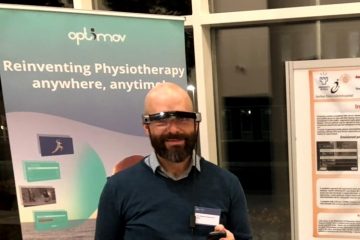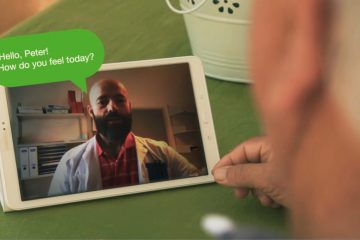In today’s post, we would like to update you on Optimov’s VAPA project and clinical trials. We are happy to announce our first statistical proof of the effectiveness of our platform. We are going to show you some of the data comparing the patients’ condition in the beginning of the clinical trials and after the first 3 months.
At the end, we are sharing an interview with José regarding the current situation with the trials in Denmark. If you want to read more about the trials you can take a look in our previous articles here and here.
Explanation of statistics
In order to proof the hypothesis from the trials, we have been gathering a huge amount of data, which needed to be statistically processed. It took us approximately 1 year to collect the data, 3 months to arrange it and get results. In the tables below you can see a comparison of 2 groups of patients with Idiopathic Pulmonary Fibrosis (IPF) as a diagnose – those that have been training with Optimov (Intervention) and those that have not (Control).
The patients have been tested with the 6 minutes walk test, which aims at defining their exercise capacity. Moreover, we have tested the ability of their lungs to extract oxygen from the air and transfer it into the blood. We have measured those at the beginning of the trials (Baseline) and 3 months later (3M). The p-value (probability value) indicates the significance of the results. A small p-value (typically ≤ 0.05) indicates strong evidence in favor of our hypothesis. This means that the smaller the number, the better our results are. On top of that we search for a difference of at least 5% to understand that there is an improvement/decreasement.
The table below shows that we can be sure that 97% of the IPF patients who do not train with tele-rehab would show similar results in baseline and after 3 months, even though statistically they will decrease their lung function with 2% to extract oxygen from the air. What is remarkable is that their exercise capacity will decrease by 25 meters on average in a 6 minutes walk test from baseline to 3 months follow up and here we can be sure this will happen with 96% of the IPF population.

Table 1.
Table 2 shows that the patients who trained with Optimov kept same condition, there was no difference between the 2 test timepoints regarding extraction of the oxygen from the air and exercise capacity. This is due to the fact their p value is not relevant (Above 0.05)

Table 2.
When we compare the results between the two groups – treated and not treated, we can see a significant difference between them in the 6 minute walk test. Here intervention group will walk an average of 39.47m more in 6 minutes than the control group. The p-value is also showing a very high probability (0.007) meaning that we can be 99,3% sure that our hypothesis is true and that most citizens with chronic lung disease will benefit from training with Optimov. We can observe as well an slightly improvement (+2.54%) with a good P value (0.044) on the total oxygen % in the blood after the performance of the 6 min walk test in the intervention group, meaning that the intervention group will have more oxygen in the blood after the 6 minute walk test, even walking 40 m more on average than control group in a 6 minute walk test.

Table 3.
We also extracted data based on St. George’s Respiratory Questionnaire aiming at quantifying the quality of life of patients. The results here showed that the patients who were treated have improved the quality of their life based on experiencing less disease symptoms (12,6% less and with a probability of 96%) of their disease and perceiving a better level of activity(18.3% improvement with 98% probability ) in their everyday life (see table 4 below).

Table 4.
What’s Next?
We will continue working with the data and soon will have the results of the patients after 6 and 9 months follow up. If you want to learn how it has been to work with the data, we have a short interview with Jose below.
When did we start working with the statistics?
When we followed the last patients who come to a 3 months follow up. It happened for 3 months ago.
How has it been to work with the data from the trials to get statistical data?
It is hard and time consuming to clean and add missing data the database before we can start with the statistics, on top of that we need to move the database from one software to another and be sure nothing has been left behind. We collected data in excel and then moved it to Stata. The statistical calculations takes also a lot of time, but after several months of work, finally we have interesting results for the baseline and the 3 months follow up on IPF patients enrolled in one of our trials.
What is next?
There are plenty of tasks to do. We want to write some abstracts based on this data to present in ERS (European Respiratory Society congress) this year in Madrid, but we also need to start working on the 6 and 9 months follow up results.
Is the data so far justifying your hypothesis and your gut feeling?
Yes to some extent, we can see that patients who are not enrolled in the intervention group (group who train with Optimov app) have slightly worsen their health. Patients who trained with us feel more active, and have less symptoms on top of that and comparing both groups we see a huge difference in their progression. Intervention group can walk almost 40 meters more than control group in a 6 minute walk test (where they have to walk as much they can in 6 minutes), and still have more oxygen in the blood after the test than in baseline. That is great
What is your feeling for the development of the trials?
Well I have underestimated the time, efforts and motivation you need to have to carry out a trial like this. But at the end you feel satisfied when you get scientific proof based on the hypothesis you participated to create. Still there will be a lot of discussions with other researchers in the area who will for sure see other angles we potentially missed and enrich future research in the area of telerehabilitation. This is a never ending process. We need to keep on researching to keep getting clever and tune the different treatment offers for chronic patients’ we can offer them to improve or maintain their quality of life.
Having positive results so far is definitely motivating us to keep on working hard to get scientific proof. Stay tuned for the development of the project or reach out if you want to hear more details about the entire project.


0 Comments